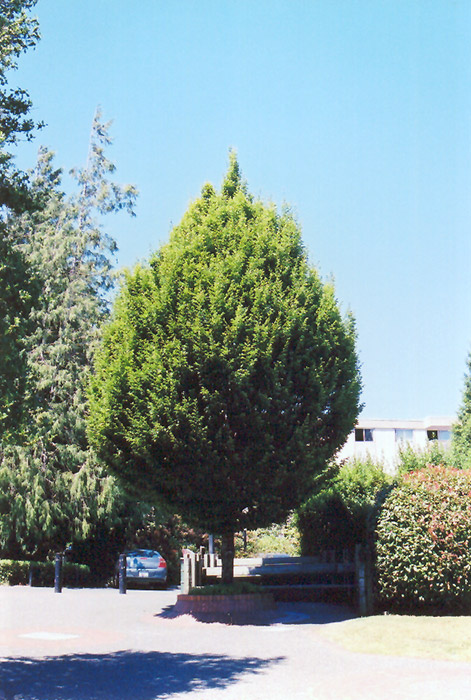PLANTFINDER
search. discover. plant.
Columnar European Hornbeam
Carpinus betulus 'Columnaris'
Height: 35 feet
Spread: 15 feet
Sunlight:
![]()
![]()
Hardiness Zone: 5
Other Names: Common Hornbeam
Description:
A very rigid and shapely specimen tree, also makes a great allee or tall hedge tree to line a road or driveway; very densely branched, one of the very best trees for rigid landscape form, tends to be formally used in Europe
Ornamental Features
Columnar European Hornbeam is primarily valued in the landscape for its rigidly columnar form. It has forest green deciduous foliage. The pointy leaves turn yellow in fall. The smooth gray bark adds an interesting dimension to the landscape.
Landscape Attributes
Columnar European Hornbeam is a dense deciduous tree with a strong central leader and a narrowly upright and columnar growth habit. Its average texture blends into the landscape, but can be balanced by one or two finer or coarser trees or shrubs for an effective composition.
This is a relatively low maintenance tree, and should not require much pruning, except when necessary, such as to remove dieback. It has no significant negative characteristics.
Columnar European Hornbeam is recommended for the following landscape applications;
- Accent
- Shade
- Vertical Accent
- Mass Planting
- Hedges/Screening
Planting & Growing
Columnar European Hornbeam will grow to be about 35 feet tall at maturity, with a spread of 15 feet. It has a low canopy with a typical clearance of 3 feet from the ground, and should not be planted underneath power lines. It grows at a slow rate, and under ideal conditions can be expected to live to a ripe old age of 120 years or more; think of this as a heritage tree for future generations!
This tree does best in full sun to partial shade. It prefers to grow in average to moist conditions, and shouldn't be allowed to dry out. It is not particular as to soil type or pH. It is highly tolerant of urban pollution and will even thrive in inner city environments. This is a selected variety of a species not originally from North America.
A NetPS Plant Finder tool

